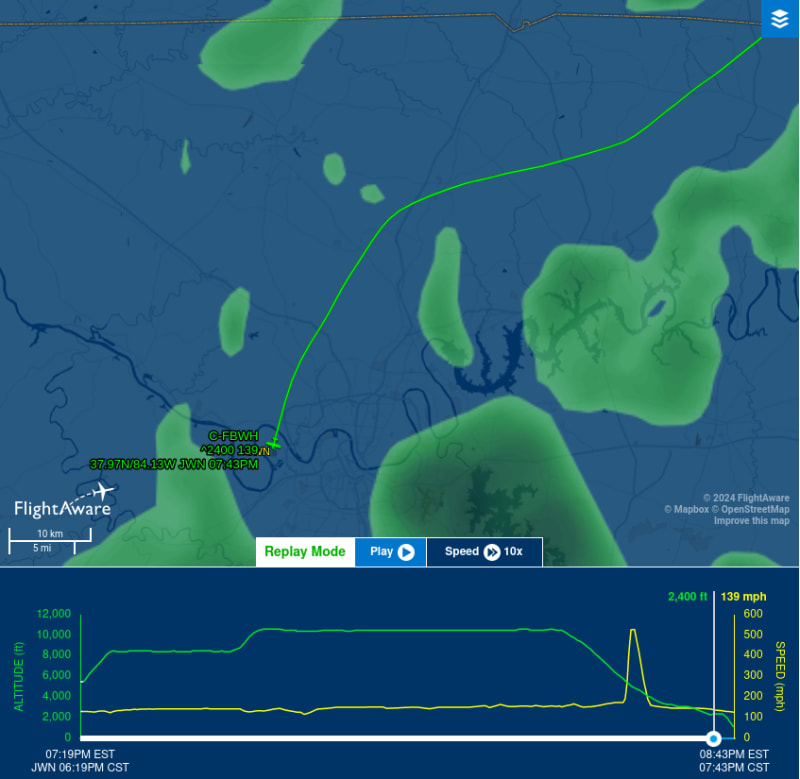cp24.com - Five Canadians dead after small plane from Ontario crashes near Nashville
Two things, the flight profile seems odd given a spike in speed approximately 15 minutes before the crash (12 minutes before passing over the field). It's as though the engine went full throttle during the descent and then remarkably corrected to nominal. Also, another situation that struck close to home when a family was lost to pilot error, losing power and crashing after passing over the field, unable to cue up the runway on the first pass and trying to double back. Are pilots just not ready/prepared for out of ordinary approaches in adverse circumstances? I don't want to cast aspersions. I have flown but it's been too long to contemplate what would be going through ones mind when the pressure is on to stick a landing and the engine is unreliable.

Flightaware.com
Two things, the flight profile seems odd given a spike in speed approximately 15 minutes before the crash (12 minutes before passing over the field). It's as though the engine went full throttle during the descent and then remarkably corrected to nominal. Also, another situation that struck close to home when a family was lost to pilot error, losing power and crashing after passing over the field, unable to cue up the runway on the first pass and trying to double back. Are pilots just not ready/prepared for out of ordinary approaches in adverse circumstances? I don't want to cast aspersions. I have flown but it's been too long to contemplate what would be going through ones mind when the pressure is on to stick a landing and the engine is unreliable.

Flightaware.com
